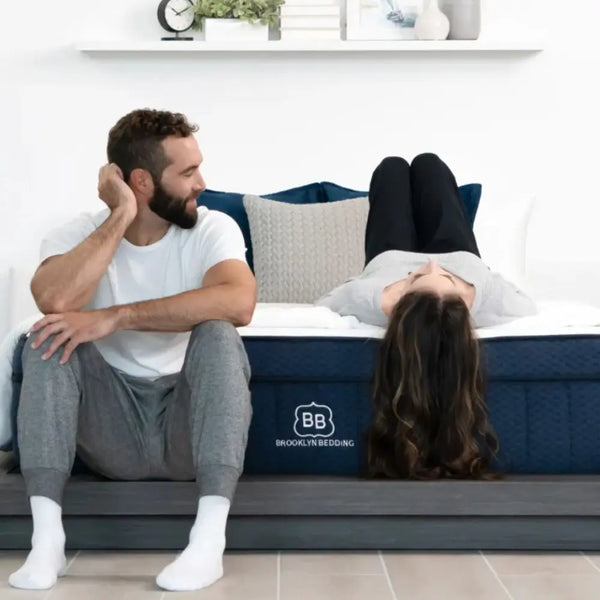Mattress Coil Guide – What to Know About Coil Types
Coils in your mattress are one of the key considerations. There are various shapes, sizes and thicknesses – also referred to as gauges – available.
The number of working turns is also crucial because it determines how soft a coil feels and for how long. More turns means softer mattresses with longer lifespan.
Bonnell Coils
Bonnell coils are an archaic innerspring style still widely found in some entry-level mattresses today. Constructed using hourglass-shaped coils connected by helical wires, Bonnell coils can create an efficient spring system despite their proximity – though their coils may be sensitive to movement and even cause pressure points due to close spacing between each coil.
Bonnell coils are more cost-effective to produce than other innerspring coils and tend to be firmer, making them popular choices in budget mattresses. Unfortunately, over time their wire holding the coils together may loosen over time and allow sagging of coils.
Offset coils are an improved and more flexible variation of Bonnell coil designs, created from hourglass-shaped coils with rounded tops and squared sides hinged together with helix wires to form one unit called an offset coil. Like Bonnell coils, offset coils respond to light pressure by flexing in response to it while increasing pushback under increased loads; however, unlike Bonnell coils they don’t tie into rows so can more readily conform to your body shape.
Offset coils can also help protect against sagging over time because their design allows them to conform more closely with your body’s curves than pushing back against them. Plus, offset coils tend to be quieter due to not featuring any rounded edges that might rub together during movement and cause noise pollution.
Offset Coils
Offset coils, like Bonnell coils, are hourglass-shaped innersprings knotted to a frame with helical wires. However, unlike their Bonnell counterparts, offset coils feature flattened convolutions which allow compression of each coil allowing it to hinge more easily when compressed by your body and provide greater support over time.
These types of springs are less likely to sag over time and provide more bounce than traditional all-foam mattresses, making them more suitable for use as an inner core mattress with thick comfort layers.
When purchasing a mattress, it’s also important to learn about how many working turns each coil has. Coils with more working turns will last longer and be stronger; thus, giving you longer use from your mattress purchase.
Coil gauge, or wire thickness, is also a key consideration for innerspring mattresses. Lower gauge wire tends to feel softer while thicker wire can feel firmer; higher gauge wire typically offers greater resistance and should feel firmer under pressure. Resiliency refers to how much resistance each coil offers against pressure; the higher the resistance, the greater its capacity to retain shape during pressure testing – often this factor alone is enough for manufacturers to provide shoppers with an easy comparison tool between the innerspring mattresses they sell. It is common practice for manufacturers to provide shoppers resiliency charts so shoppers can compare what options they have on sale and what type of innerspring mattresses they sell compared with one another when selecting innerspring mattresses from their retailers’ inventory.
Continuous Coils
Coils are the foundation of innerspring mattresses and can have an enormous effect on how it feels and its durability. There are various coil types used in mattresses which may differ by size, design and gauge – it is important to understand each coil type’s benefits in order to determine which will meet your specific sleep needs.
Bonnell coils, knotted and unknotted offset coils, continuous wire coils (known as miracoils) and pocketed Marshall coils are typically found in mattresses; although some mattress models use microcoils or nanocoils in the comfort layers to provide hybrid functionality.
Bonnell coils are popular choices among low to mid-range priced mattresses because their production costs are lower compared to hourglass coils. Unfortunately, Bonnell coils don’t last as long or provide as much contouring support compared to their competitors’ designs.
Continuous wire or miracoil systems offer another cost-efficient alternative to bonnell coils, while still remaining cost effective. Similar to offset coils, but using one piece of metal throughout its network. While this makes the coils more durable and noiseproof than their offset counterparts, its increased durability may make them noisier and less effective at reducing motion transfer; so if you share your bed with a partner this might not be suitable.
Microcoils
Microcoils (sometimes called nanocoils or minicoils) are small flexible coils designed to enhance responsiveness and durability, most frequently found in comfort layers of mattresses or as transition points between support core layers and topmost layers. Together, these springs form a deep cradle to offer balanced pressure relief and spinal support.
Manufacturers create microcoils through winding or twisting electromagnetic wire into a coil shape. The manufacturing process requires special machinery for high quality and tight tolerance control. Microcoils have numerous uses in electronic and medical technology applications such as pain management devices, deep brain stimulation components, orientation/navigation sensors, pacemakers and electricity-based ablations processes.
Coil gauge and coil count should both be considered when searching for a mattress. Both refer to the thickness and density of each coil; higher coil counts usually signify greater durability and resilience; however lower gauge coils can still feel great when combined with thick foam layers for maximum comfort.
These hybrid mattresses combine microcoils or other coil types with thick layers of memory or latex foam for maximum comfort, durability, and support all night long. Shoppers will enjoy finding these beds that combine microcoils with memory or latex foam layers – giving shoppers the best of both worlds when shopping.









